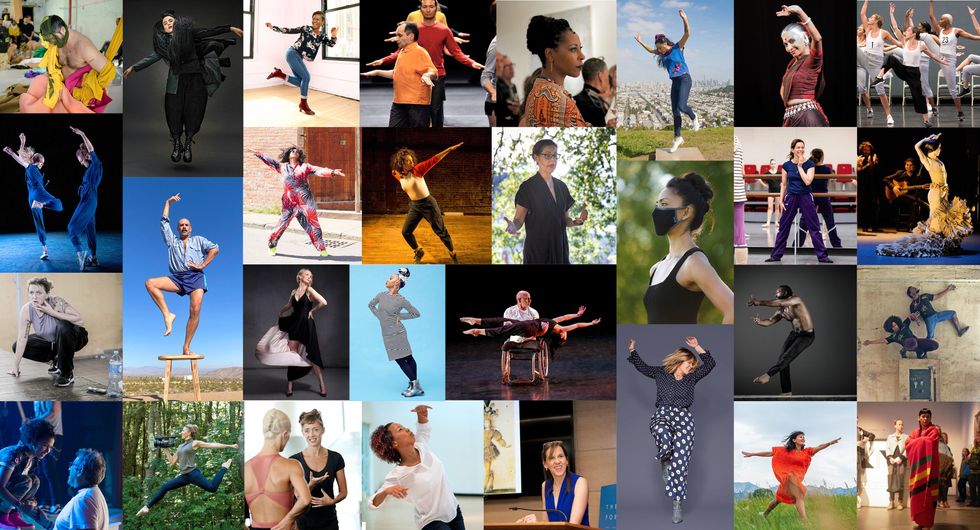30 Over 30: Dance Pros Who Prove Success Can Happen at Any Age
Maybe even more than most industries, the dance field is obsessed with youth. We fawn over prodigies, we love to predict the next big thing. Yes, Dance Magazine itself is 100 percent guilty of this, with features like “25 to Watch” and On the Rise. But just because a performing career can be short doesn’t mean that it has to be, or that someone doesn’t have anything to offer the dance world if they haven’t done it by their 20s. So we decided to put a twist on the traditional power list and highlight 30 over 30 who’ve had incredible breakthroughs, or seen career renaissances, or come into their own in new chapters of their careers after age 29. Their success today is built on the foundations they laid down, the experience they gained, the work they put in as they soaked up the lessons along the way.
From Chorus Girl to Leading Lady: Angie Schworer
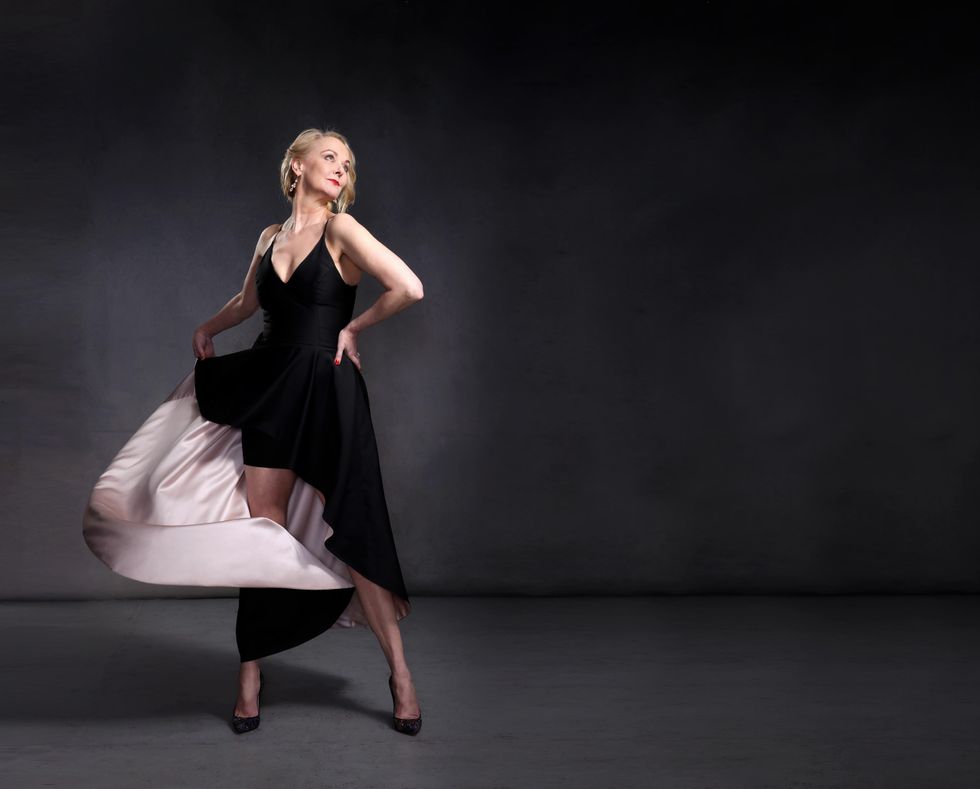
Jayme Thornton
It’s the classic story—a chorus girl steps in for a star and becomes an instant leading lady. But for Angie Schworer, who starred in The Prom after 27 years on Broadway, it wasn’t quite that simple. Sure, it was a dream come true, especially since she was playing a veteran ensemble dancer named Angie waiting for a long-overdue break. But Schworer’s big moment had come 16 years earlier, when, after 16 months dancing in the ensemble and understudying Ulla in the 2001 phenomenon The Producers, she did the role in the first national tour, and then, already into her 30s, played the Scandinavian sexpot on Broadway for the musical’s last four years.
“Had I been that person saying ‘I only do roles now,’ I would have missed out on probably five more shows,” she says. Instead, she went back into the chorus—when Susan Stroman asked if she’d be a replacement in the Young Frankenstein ensemble, she said, “S-u-u-u-re. If my body can do it, I’ll do it.”
Tall and lanky, Schworer had been doing it since the age of 5, when she began classes at the Ziegler Studio of Dance in Covington, Kentucky. Her road to Broadway included theme parks and Atlantic City stage shows, and her showgirl chops—not to mention those showgirl legs—landed her an ensemble slot in The Will Rogers Follies in 1991. The body feels “creakier” now, but she credits Debbie Roshe’s jazz classes at Steps on Broadway, and regular swimming, for maintaining it. She didn’t warm up in her 20s—”I didn’t need to,” she says—but in The Prom she spent the whole intermission warming up for her big Fosse-style number. She imagines the young dancers in the company wondered why, going ” ‘Pffft—she’s barely doing anything.’ But I had to warm up to do it,” she says, “because you’re using your pelvis, you’re using your lower back.”
Much has changed over her three decades on Broadway, but one thing has stayed the same: “That joy and excitement of someone wanting you to be a part of their Broadway show.” —Sylviane Gold
Inviting More to Dance: Antoine Hunter
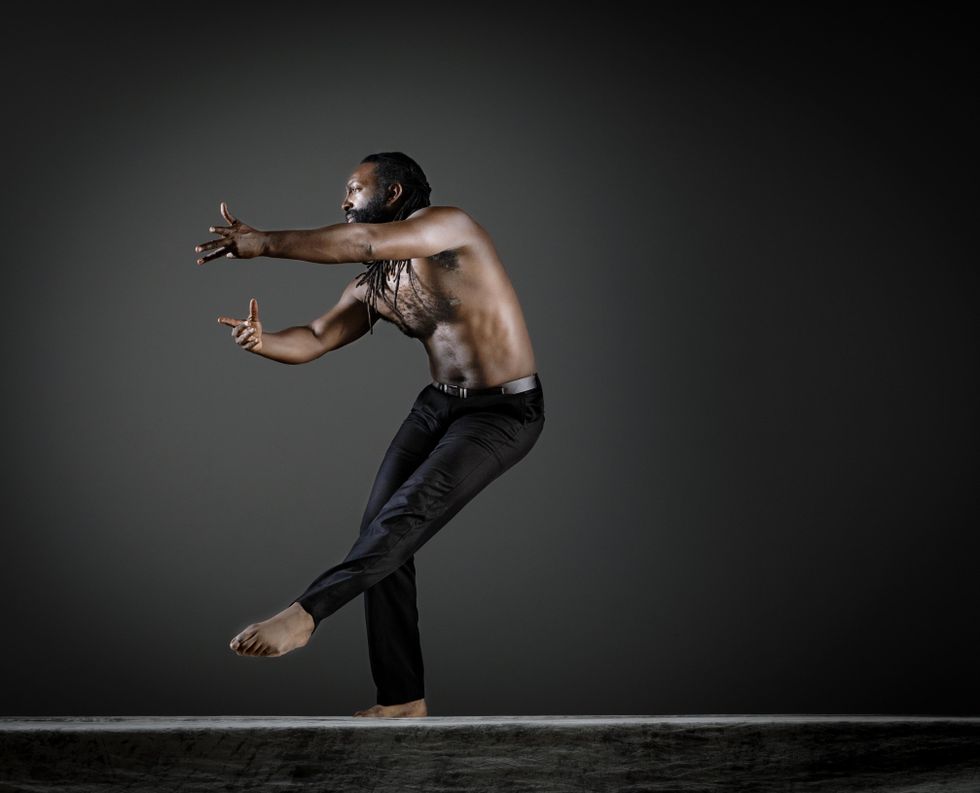
RJ Muna, Courtesy Hunter
“Dance saved my life,” says Antoine Hunter, who was sometimes made to feel alienated growing up Deaf in Oakland, California. But in his high-school dance class, “I realized that through dance, I could communicate.” Dance became a spiritual and artistic mission that led him to found Urban Jazz Dance Company in 2007 and the Bay Area International Deaf Dance Festival in 2013.
Now in his mid-30s, Hunter is seeing his endeavors flourish in choreographic commissions; company tours to the UK, Turkey, Russia and Africa; speaking engagements at Harvard University, the Kennedy Center and APAP; and honors like a 2019 Dance/USA Fellowship. He has helped start international Deaf dance festivals as far afield as Turkey and Hong Kong. He’s even collaborated on an invention that allows dancers to feel music through their shoes. Most satisfying of all, he says, is “teaching people how to use dance to save their own life.” —Claudia Bauer
Finding Fresh Potential in Flamenco: Olga Pericet
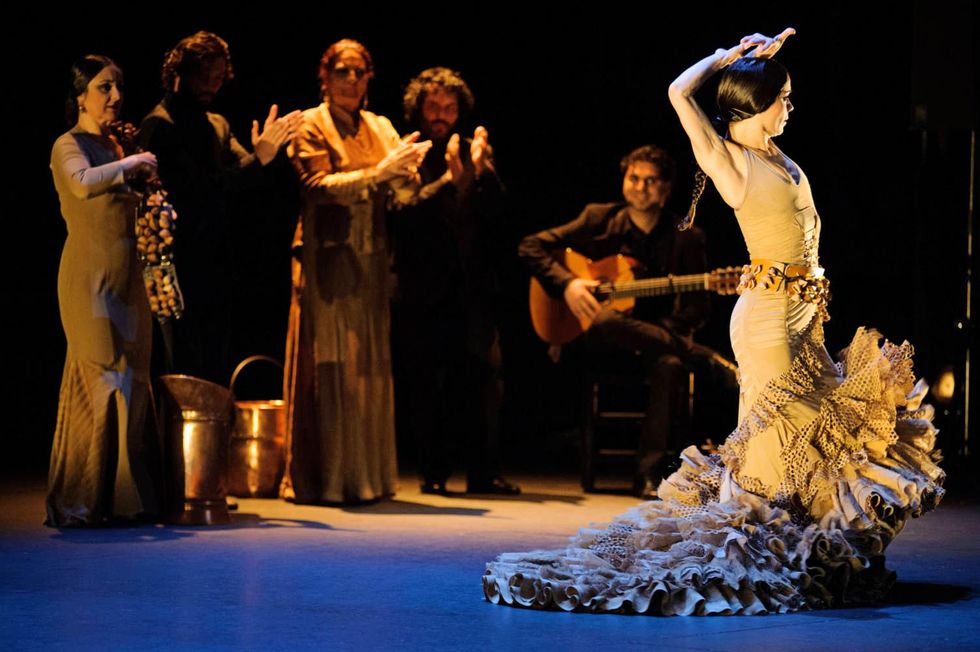
Olga Pericet in Pisadas. Photo by Paco Villalta, Courtesy Pericet
Although she’d long been a key collaborator in other choreographers’ works, flamenco dancer Olga Pericet didn’t see her solo career take shape until her mid-30s. “I chose a difficult career path,” she says, “slower but surer.”
At 32 she won the Pilar López Dance Prize, which opened the door to present her first solo work, Rosa, Metal, Ceniza at the Jerez Festival, where she was awarded the Revelation Artist Award at age 35. Since then, Pericet has enjoyed a whirlwind of global engagements and yearly recognition, garnering top dance prizes such as the 2018 Spanish National Dance Award. Pericet masterfully recontextualizes flamenco’s past repertoire with humor, sensitivity and skill, fueled by her boundless imagination to challenge and meet our times head-on.
Now in her mid-40s, she says that with more maturity, “I am able to love every detail of my work and appreciate the people working alongside me, free of insecurities. I have confidence in myself because I know who I am as a creator and performer.” —Bridgit Lujan
He’s Not Done: Miguel Gutierrez
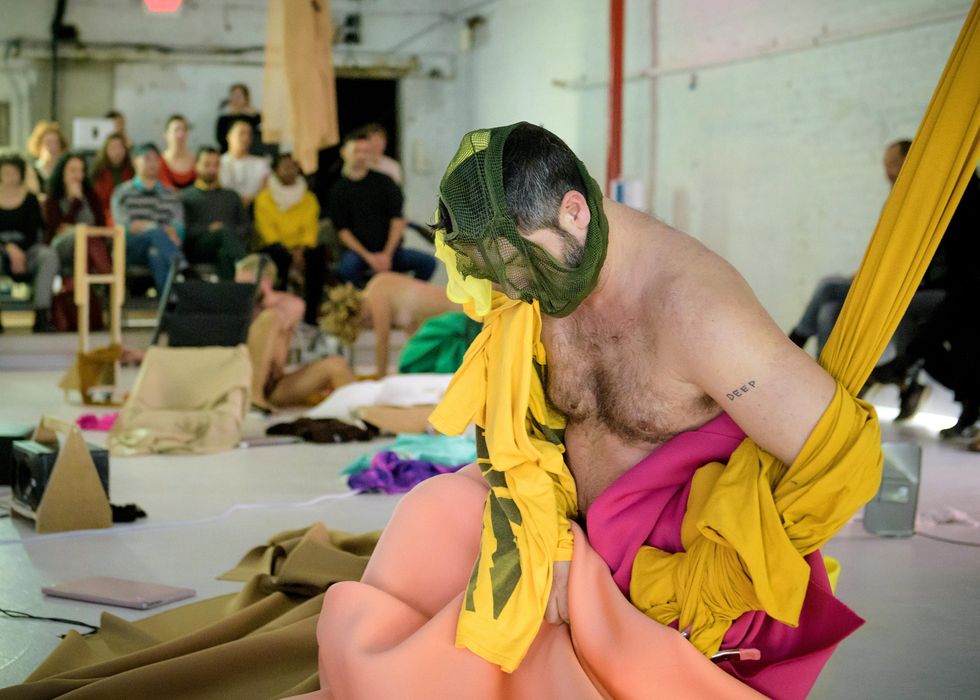
Miguel Gutierrez in This Bridge Called My Ass. Photo by Ian Douglas, Courtesy Gutierrez
Ever since his 2005 Retrospective Exhibitionist/Difficult Bodies earned him critical acclaim and his first big tour, Miguel Gutierrez has been a darling of the downtown New York City dance scene. But that designation doesn’t always come with the typical trappings of success (read: broad recognition and money). For Gutierrez, those came five years later, when at ages 38 and 39, he won a Foundation for Contemporary Arts Award, a United States Artists Fellowship and a Guggenheim Fellowship. (He used much of the funding to pay off credit card debt and five years of owed taxes.) His name has since become synonymous with making it big as an experimental artist, as he continues to create and tour and rake in awards—including four Bessies.
“Don’t forget about us middle-aged artists,” he says. “There’s such an emphasis on youth. Artists get to a certain spot and it feels like the field turns on them. Why should I feel like I have to clamor for relevance at this age? There’s this sense of dismissal, of ‘Oh, you had this experience and you’re done.’ I am not done.” —Lauren Wingenroth
Questioning, Yet Assured: Leslie Cuyjet
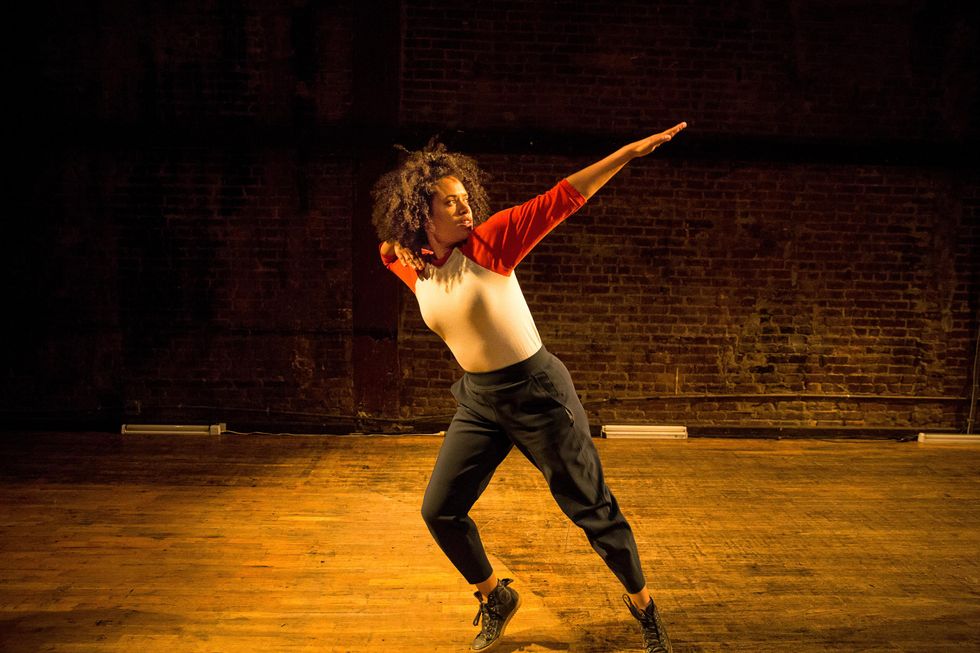
Leslie Cuyjet in A Salient Theme. Photo by Scott Shaw, Courtesy Cuyjet
Though Leslie Cuyjet has built a career out of dancing for seemingly everyone in the experimental New York dance scene—she won a Bessie Award in 2019 for her work with Jane Comfort, Juliana F. May, Niall Jones, Cynthia Oliver and Will Rawls—it’s only in the last four years that she’s felt her own choreographic career blossom.
Cuyjet considers her 2017–18 stint as a Movement Research artist in residence, begun when she was 36, as transformative. “I’d been getting little things independently, here and there,” she says, “but this was the first time an organization said, ‘We support you as an artist, and we’ll give you the resources you need.’ ” Having the space to mine questions of identity and what it means to be a Black woman—both hallmarks of her assured, character-driven work—gave her permission to fail, to experiment, to listen.
When the pandemic struck, Cuyjet, like many other artists, watched as opportunities dried up. “Everybody was faced with what artists have been facing all the time,” she says, “which is: You make something out of nothing.” She ended up creating virtual works for the EstroGenius Festival and The Kitchen. Now, The Kitchen is bringing her previously canceled show back, and she is working on a new piece for The Shed. —Rachel Rizzuto
From Dancer to Activist: Theresa Ruth Howard
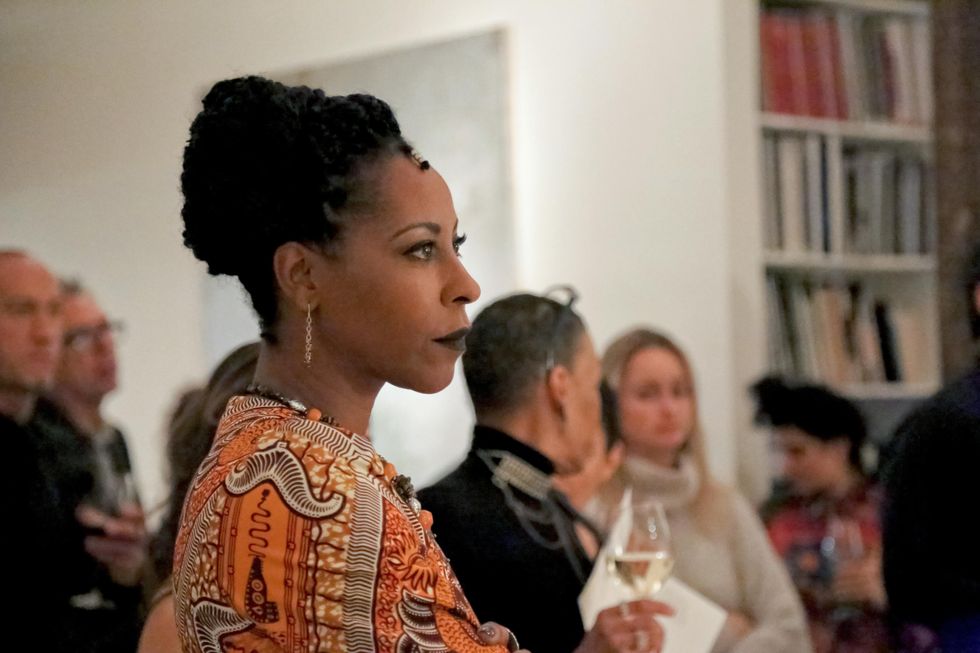
Saya Hishikawa, Courtesy Howard
After retiring from a successful career dancing with Dance Theatre of Harlem and Armitage Gone! Dance, and guesting with Complexions Contemporary Ballet, Theresa Ruth Howard came into her own as an activist. It started in 2015 when she wrote a viral blog post calling for information on Black ballerinas who came before Misty Copeland. The outpouring of data organically evolved into Howard’s Memoirs of Blacks in Ballet (MoBBallet.org), which includes a “roll call” of more than 560 Black ballet dancers. Today, at 50, Howard is an in-demand diversity strategist for ballet companies dealing with issues like colorism, implicit bias and systemic racism.
She encourages dancers today to “broaden their aperture,” she says. “Your value does not hinge on a tendu; your intellect is as important as your développé.” —Nancy Wozny
Lifelong and Steady: Ryan Heffington
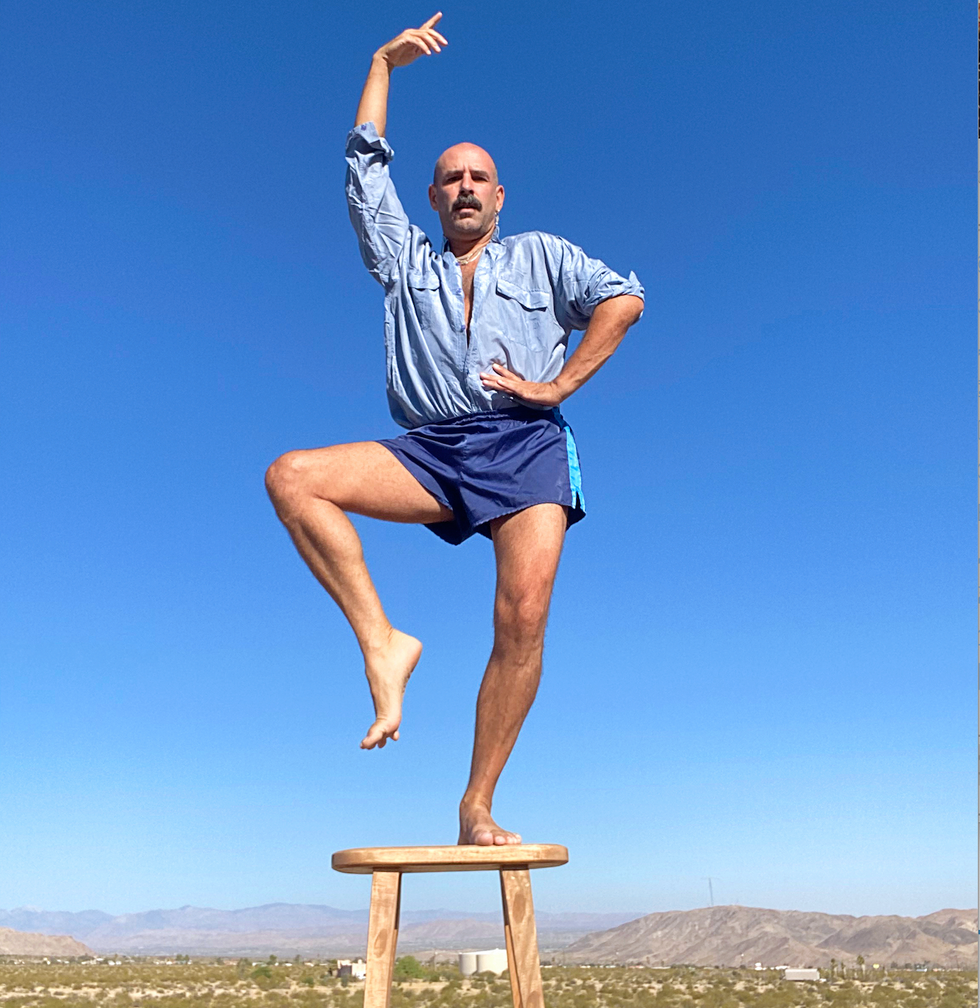
Courtesy Heffington
Choreography titan Ryan Heffington describes his success in the dance industry as a slow burn. When he began creating work in his mid-20s, he was embraced only by the art world. His major breakthrough didn’t come until he hit 40 and landed Sia’s “Chandelier” music video—which instantly went viral. “I’m quite thankful that happened when it did,” he says. “I felt like I put in the work and laid the foundation for this success. Now, I’m looking forward to a lifelong and steady relationship with dance.”
So far that steady relationship looks more like a passionate romance. As one of the most in-demand choreographers in Hollywood, his resumé includes two Grammy nominations; feature films, like Baby Driver; Netflix’s “The OA”; commercials for Target, Nike and Under Armour; and collaborations with Paul McCartney, Lorde, Florence + the Machine and Arcade Fire. Still, he admits to moments of doubt: “The voice that says, ‘Will I ever work again?’ is still there when I have a few months of downtime.”
One of the biggest things he’s learned with experience? The power of cultivating his own voice. “When I was younger, ‘doing me’ meant being more of an outcast,” he says. “My friends and I were more punk—creatives who gained inspiration from clubs, rock music, fashion and partying. We didn’t need money, just an outlet. Eventually, I started working more because my work was unique. Directors and clients now want ‘Heffington’ instead of re-creating something that has been done before.” —Haley Hilton
In It for the Long Haul: Pam Tanowitz
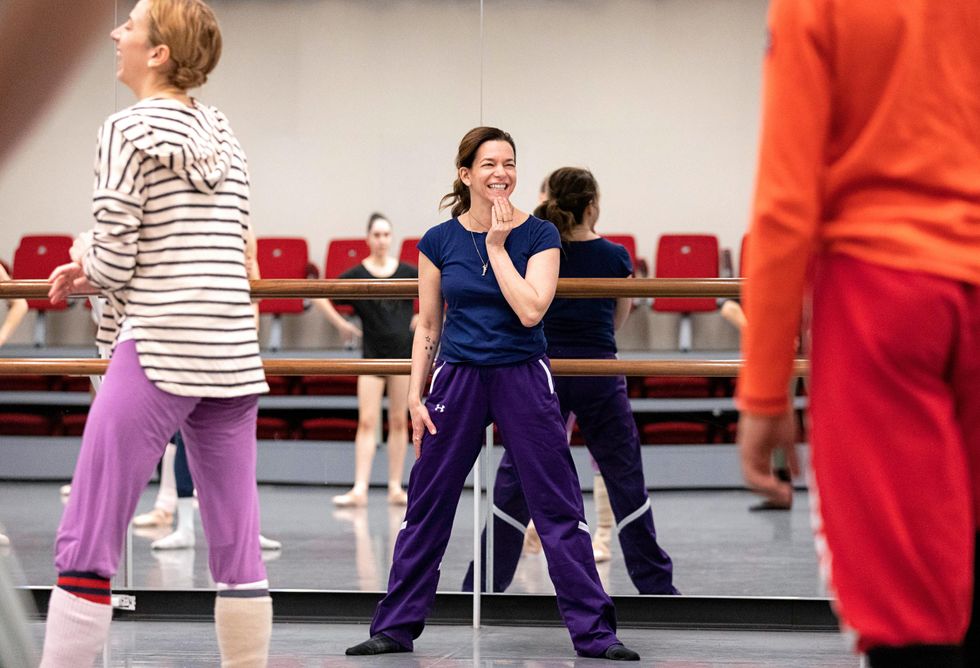
Pam Tanowitz in rehearsal at NYCB. Photo by Erin Baiano, Courtesy Tanowitz
Pam Tanowitz keeps a folder full of her rejection letters. “A thick folder,” she says. Although she began choreographing during her junior year at Ohio State University, she didn’t receive a single grant until age 40. For about 15 years, she held a day job as the studio manager at New York City Center so she could have a steady income and access to studio space while making just one new work per year. “A choreographer came to rent space once and was like, ‘Did you know there’s a choreographer with your same exact name?’ ” Tanowitz says, laughing.
Then, just before she turned 50, her intricate, technique-driven works were suddenly in demand. In 2019 alone, she got commissions from New York City Ballet and The Royal Ballet, Martha Graham Dance Company and Paul Taylor American Modern Dance, and booked an international tour with her eponymous company. “Looking back, not being noticed for 15 years was a gift,” she says. “Once I realized my career path would not be that of the hot, young choreographer, I just blocked out the noise of who was getting what, and focused on making good dances.” —Jennifer Stahl
Expanding Across Borders: Rosy Simas
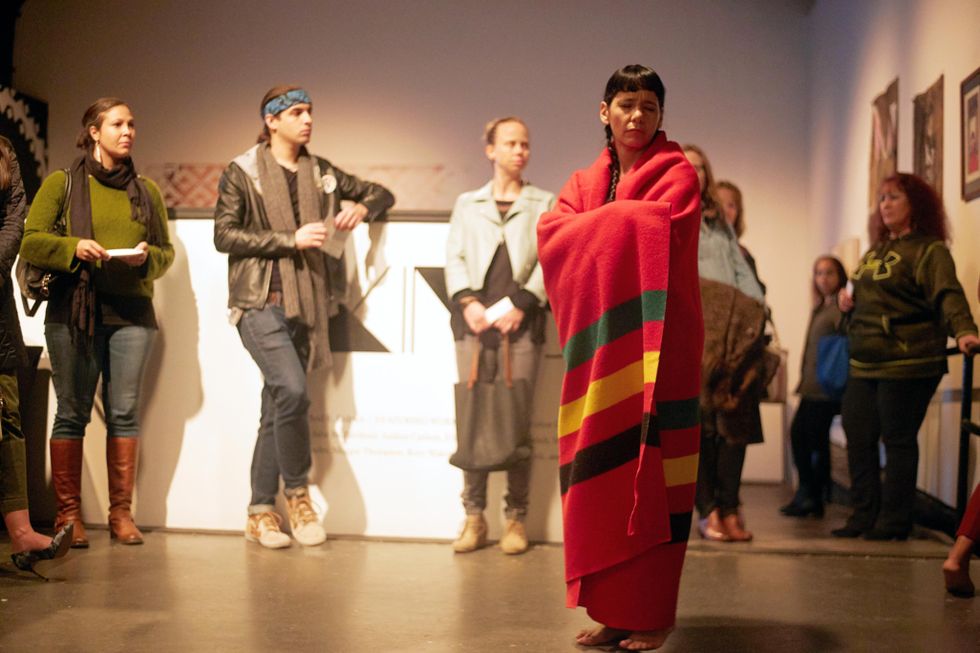
Rosy Simas performs Skin(s) Uche Iroegbu, Courtesy Simas
Rosy Simas, 54, has lived, worked and danced in Minneapolis, Montreal, New York City and Santa Cruz, yet western New York state is also an area she considers home, as a Heron Clan Seneca within the six nations of the Haudenosaunee. Simas occasionally answers questions about place with stories of artist displacement: “When I was 30, I was living in Santa Cruz and running a dance studio I started. We ended up closing because of the dot-com boom that priced us out.” Later, she ended up in Montreal, drawn in by the city’s dance improvisation community. “There was no way for me to get grants, though people were generous about letting me teach and present my work,” she says.
Eighteen years passed between the sunset of her California studio and the incorporation of Rosy Simas Danse in Minnesota in 2017. In the meantime, she primarily worked as an independent choreographer and artist. In recent years, she’s focused specifically on building long-term relationships in the field, and expanding the mission of her organization beyond producing her own shows. “This is really the first time I’m doing it in a way where we’re directly supporting other artists,” she says. —Zachary Whittenburg
Arriving in One Leap: Abby Zbikowski
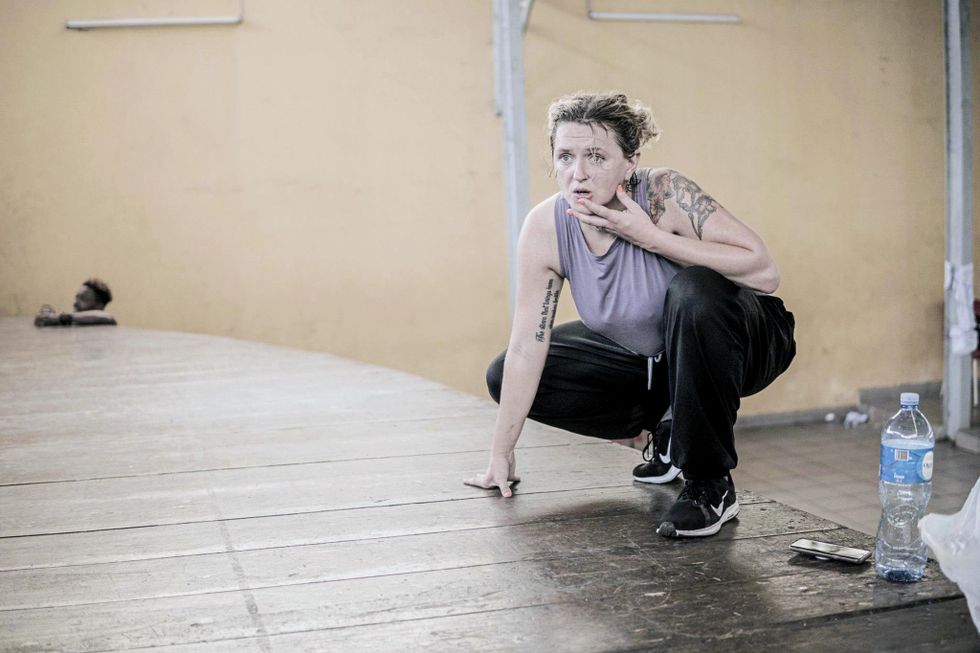
Abby Zbikowski teaching at Focus Records. Photo by Focus Films, Courtesy Festival Un Pas Vers l’Avant
Abby Zbikowski seemingly burst onto the contemporary dance scene in 2017 with abandoned playground, a work drenched in her signature style: aggressive, punishing somersaults and thwacked kicks that wouldn’t look out of place at a sports meet. It won her a Juried Bessie Award, and toured throughout the country. But Zbikowski had actually formed her company, Abby Z and the New Utility, five years earlier. This was just the first time people were paying attention.
Zbikowski, now 37, didn’t let that bother her. “For as many heartaches I might’ve felt at not being recognized at an earlier age, I think it helped me really create and hone this movement out of the public eye,” she says. “By the time people came to know my work, it was ripe—there had already been a lot of research, a lot of trial and error. And understanding.” —Rachel Rizzuto
Galvanizing Ballet: Jennifer Homans
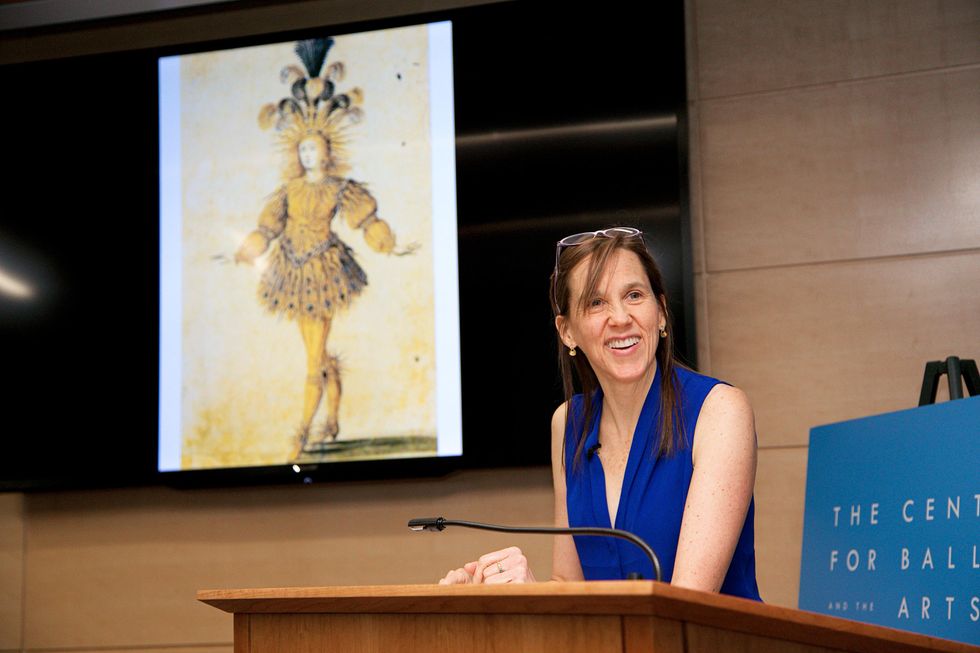
NYU Photo Bureau: Hollenshead, Courtesy Homans
Little did Jennifer Homans know, in 2010, when she wrote the anguished words “I now feel sure that ballet is dying” at the end of her nearly 700-page ballet history Apollo’s Angels, what a galvanizing effect that sentence would have. Ever since, the matter has been discussed, rejected, invoked as gospel truth and used as a springboard for creation. Four years later, Homans channeled her energies into the founding of the Center for Ballet and the Arts, a think tank and artistic laboratory based at New York University that brings together writers, dancers, set designers, choreographers and scholars of all types to think, discuss and create.
Homans, 60, started out as a dancer with companies including Pacific Northwest Ballet. She retired at 26 following an injury. “When I stopped, I had a serious crisis of identity, and a couple of years of real depression,” she says. But after completing a PhD in modern European history, she found her way back to dance. “I reconciled writing and dancing through the study of history,” says Homans, who is now The New Yorker‘s dance critic. But all her activities and achievements have been driven by the same thing. “I just love dance,” she says. “It is a life force.” —Marina Harss
Never Too Late to Be a Principal: Stella Abrera

Quinn Wharton, Courtesy Kaatsbaan
It took Stella Abrera 14 years to rise from soloist to principal dancer at American Ballet Theatre, at the age of 37. But nothing really changed on the day of her promotion. For years, she had been dancing with the grace and integrity of someone who puts in the work not for accolades but for its own sake. “I knew that I had a finite number of years to enjoy this enormous gift,” she says of her five years as a principal, “and I also knew that every single time I went out onstage, I was giving my absolute best.”
After retiring from performing in 2020, she seamlessly transitioned to her new role as artistic director at Kaatsbaan Cultural Park, an institution in upstate New York devoted to dance instruction, creative residencies and performances. It was her idea to create an outdoor dance festival so that her fellow dancers, sidelined for months by the pandemic, could get back to what they loved best. Her approach to leading Kaatsbaan, she says, is similar to how she danced: “I feel like I was always a good worker, and I know how to work efficiently,” she says. “I’m learning to translate those processes, which I used as a dancer, to my new role.” —Marina Harss
Finding Freedom as a Freelancer: Bijayini Satpathy
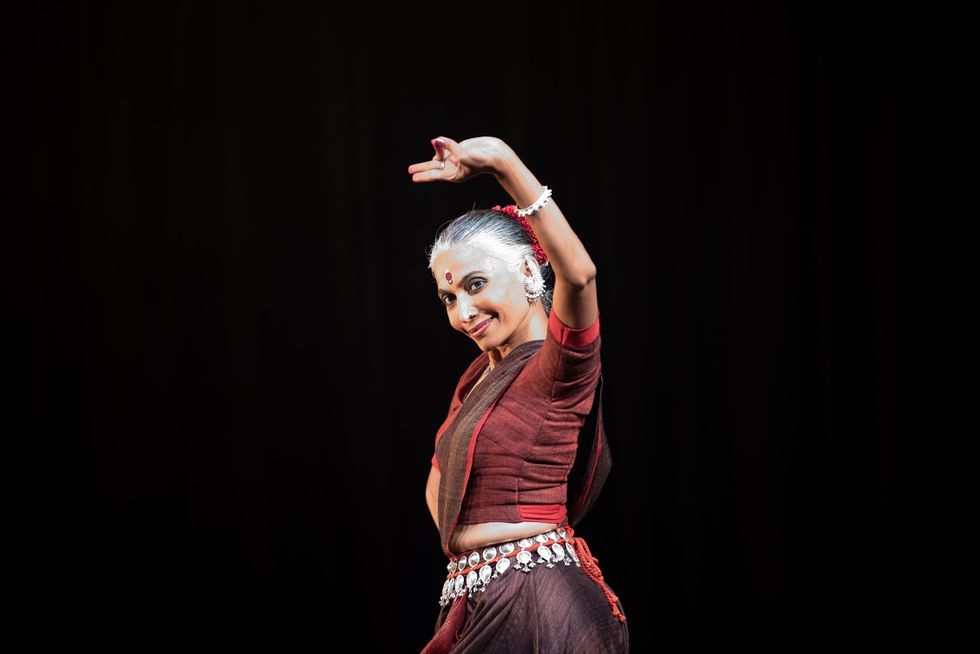
Allan Mathew, Courtesy Satpathy
Bijayini Satpathy’s dancing encompasses all the qualities of great dance: musicality, incisiveness, focus and something larger, a kind of cosmic flow. For 25 years, as a member of Nrityagram and as the director of its unique training program—which she developed—Satpathy was one of the most distinguished dancers and pedagogues of the Indian classical dance form Odissi.
But, she says, in the last two years, since setting out as a soloist and choreographer at the age of 45, she has felt empowered to apply her research on expanding the limits of the Odissi language within her own work. “I see how my body moves,” she says, “and it tells me that I have a command of this language that I have studied and performed for so many years. I know the nuances of it, and yet I move in my own way. I’m writing my own story.” —Marina Harss
Exposing the Underrepresented: Raimund Hoghe
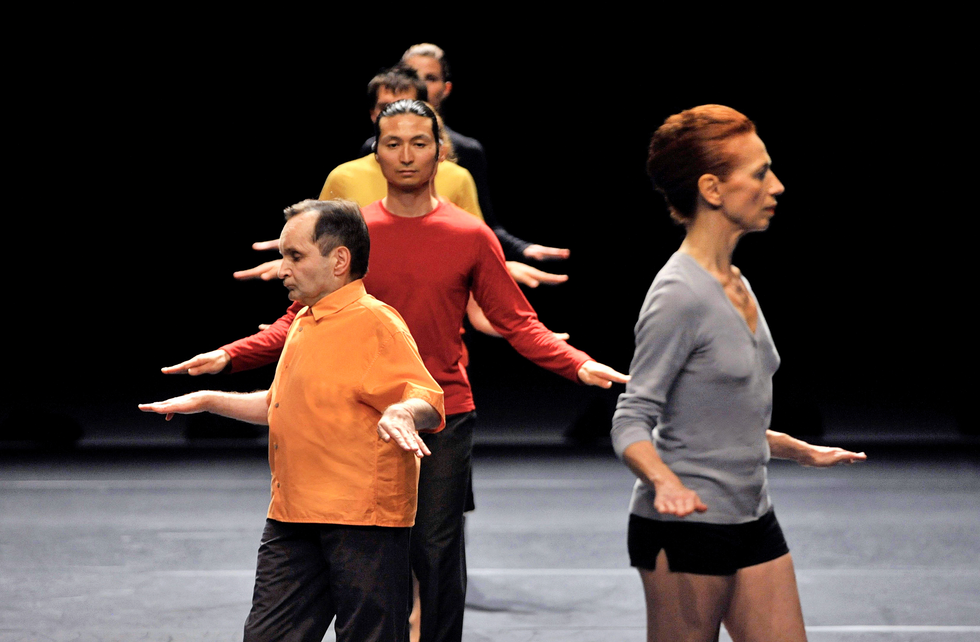
Raimund Hoghe (downstage left) in Si je meurs laissez le balcon ouvert. Photo by Rosa Frank, Courtesy Hoghe
Based in northwest Germany, Raimund Hoghe began his professional life as a journalist. His articles brought visibility to marginalized communities; recurring subjects included sex work and the human impact of the AIDS crisis. Though as a child he appeared in plays by Brecht and Shakespeare, he was in his 30s when he began working professionally in the performing arts, as a dramaturg for Tanztheater Wuppertal Pina Bausch. Only in his early 40s did Hoghe begin making his own dances, guided by advice he said came from the soprano Maria Callas: “Keep going in your own way, not with fireworks and not for easy applause, but with real feeling.”
In addition to creating and performing solos, Hoghe collaborated with artists such as Congolese choreographer Faustin Linyekula and Japanese dancer Takashi Ueno until his death in May, at age 72, just as the issue in which this feature originally appeared went to print. His lifelong sympathy for the underrepresented, whether on paper or onstage, stemmed in part from living with a congenital deformity of his spine he simply called a hunchback. He was always mindful about stepping into other people’s shoes and vice versa. “A solo for me is always more political than a solo for another dancer, because I can’t ask someone else to perform my political statement,” he said. —Zachary Whittenburg
The Dance Theater Whisperer: Annie-B Parson
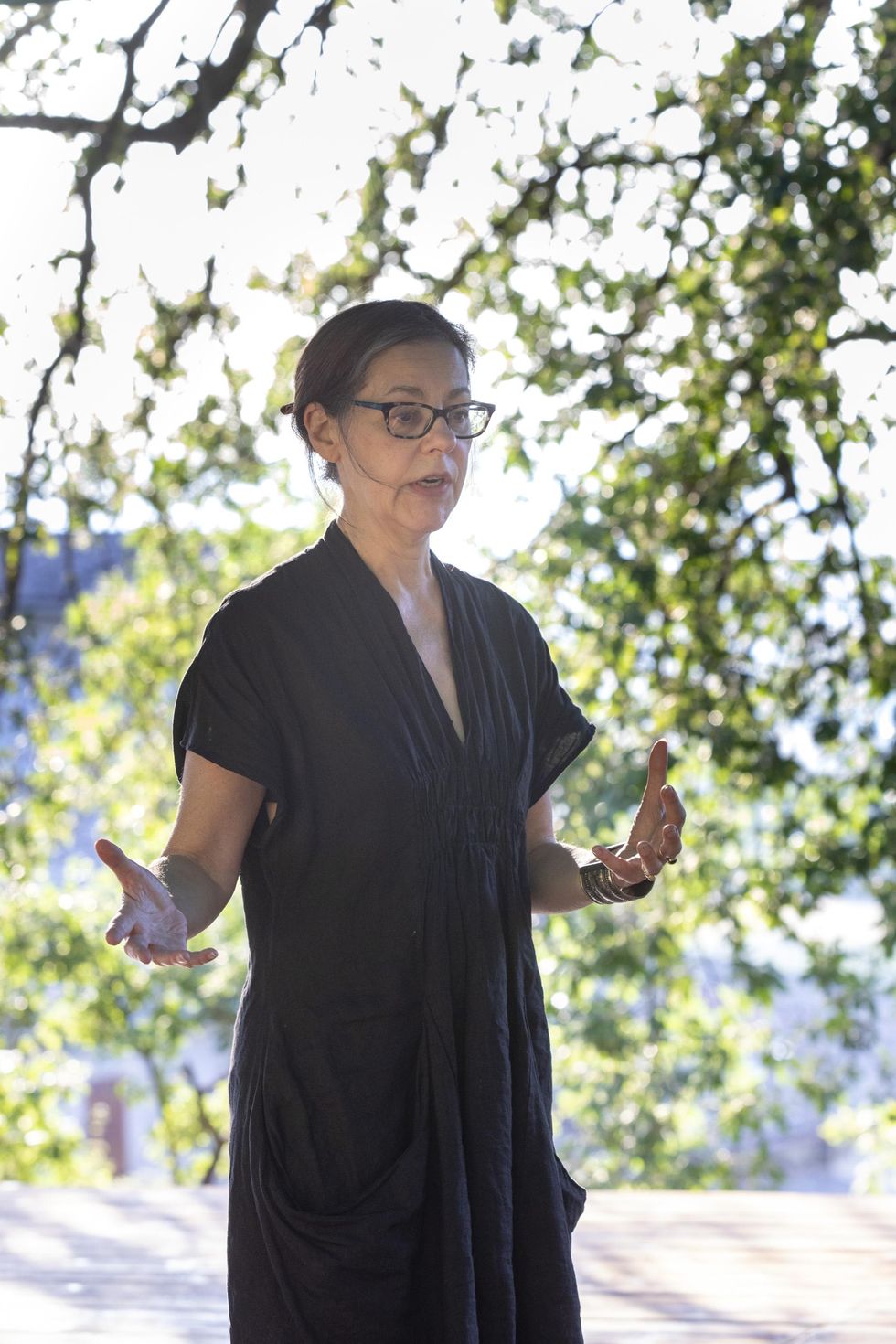
Andrea Messana, Courtesy Parson
Choreographer Annie-B Parson co-founded Big Dance Theater in 1991, and she’s been making clever, inventive and critically acclaimed genre-pushing work since. But about a decade ago, when Parson was in her 50s, that work was introduced to a much larger audience through collaborations with an ever-growing list of performing arts celebrities, including David Byrne (for whom she recently choreographed a Broadway-concert-turned-Spike-Lee–directed HBO special), Mikhail Baryshnikov and St. Vincent.
“Forget about your career for a good long while, and get in the studio and choreograph,” Parson suggests. “Choreography is a lot like being a pianist—you have to sit down and do your scales every day. That could be taking a walk and looking at the compositional elements around you. It might mean I look at my kitchen table and restage the salt and pepper. It’s a practice that needs to be attended to daily.” —Lauren Wingenroth
Growing Humor, Sparkle and Grit: Monica Bill Barnes
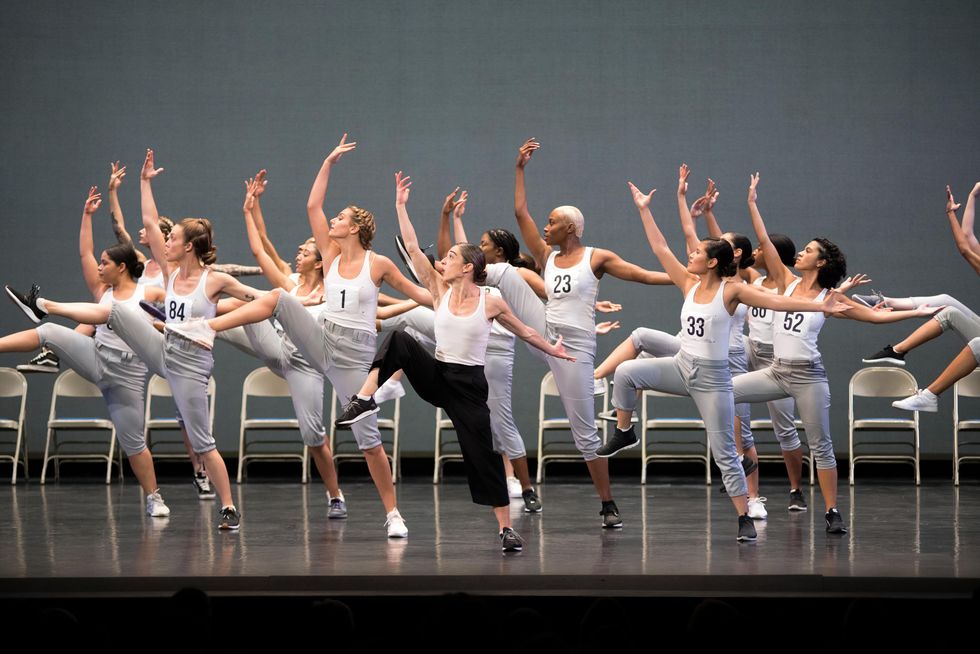
Monica Bill Barnes performing with Hunter College dancers at Fall for Dance. Photo by Paula Lobo, Courtesy Monica Bill Barnes & Company
Though Monica Bill Barnes founded her troupe, Monica Bill Barnes & Company, in 1997 and has steadily choreographed and performed ever since, the past decade has brought with it attention on a much larger scale. Touring to more than 100 cities worldwide, Barnes and her close-knit team have collaborated with luminaries including radio host Ira Glass and illustrator Maira Kalman. In 2019, Barnes made the leap to the silver screen, choreographing Greta Gerwig’s Little Women.
In line with her company’s mission to “bring dance where it doesn’t belong,” Barnes approaches each project—whether it’s working out at the Metropolitan Museum of Art or dancing to Neil Diamond at a luxury mall—with her trademark blend of humor and compassion, sparkle and grit.
“The day-in-and-day-out work that I did in my 20s was very similar to how I worked in my 30s and now my 40s,” says Barnes. “I think being in such a constant practice is the reason why I’ve really been able to understand myself as an artist.” —Chava Pearl Lansky
Making Life Into a Dance: Michelle Boulé

Audrey Hall, Courtesy Boulé
At 43, Michelle Boulé finds that one of the greatest gifts to come with age is clarity. “What really started to happen in my 30s is that I got clearer on who I am and what I want to do. I’m not living with this external notion of who I should be,” she says. “I’ve learned how to turn everything that seemed like a disappointment into an opportunity.”
Shortly after turning 30, she won a Bessie Award for her performance as James Dean in Last Meadow, a collaboration with Miguel Gutierrez. Since then, critics have hailed her as a “force of nature” in collaborations with Bebe Miller, John Jasperse, Doug Varone and Deborah Hay, among others. Meanwhile, her contemporary choreography has graced stages at Baryshnikov Arts Center, Movement Research at Judson Church, and The Chocolate Factory, and toured internationally.
Today Boulé also channels the creativity, tenacity, compassion and collaborative spirit she’s gained from her illustrious dance career into work as a life coach. “I am harvesting the gifts that my 40-year practice in dancing has given me,” she says. “How can I help other people feel like their life is dance?” —Rachel Caldwell
Capturing the Moment: Nel Shelby
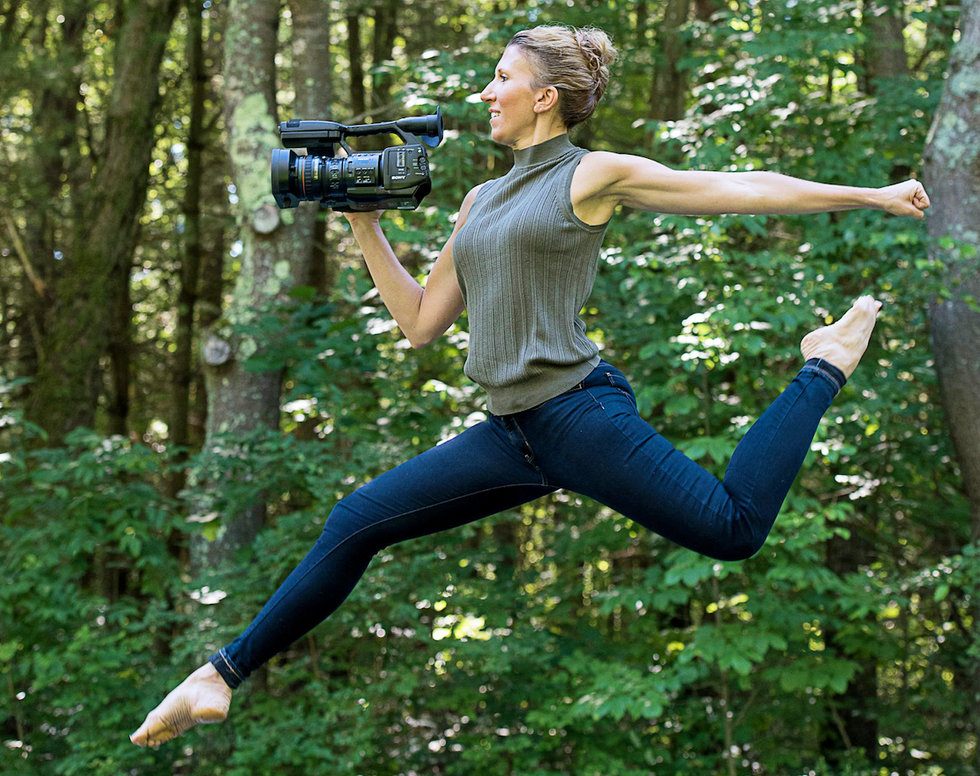
Christopher Duggan, Courtesy Shelby
A sturdy braid of dance, filmmaking and entrepreneurship runs through the center of Nel Shelby’s story, from training in ballet, jazz and tap during her Colorado childhood, to studying broadcast media at Stephens College in Missouri, to her arrival at Jacob’s Pillow as a videography intern. Nel Shelby Productions opened for business in 2004; four years later, she stopped teaching Pilates part-time to focus on her company and two kids.
Today Shelby manages 40-some concurrent projects, with help from up to a dozen employees and contractors. The pandemic-inspired shifts to virtual led to greater demand than ever before. Fall for Dance, Jacob’s Pillow and Vail Dance Festival are just three of her company’s nearly 100 clients.
With movement in her bones, she’s developed a unique approach to dance documentation that can capture the moment as well as communicate at the speed of contemporary culture. “Words like ‘archivist’ and ‘documentation’ can feel dry, so it’s taken me a while to see myself as an artist,” says Shelby, now 44. “I love being in my 40s and I love having been around the dance world for a while, realizing that we all did grow up together,” she says. —Zachary Whittenburg
An Eternal Evolution: Mia Michaels
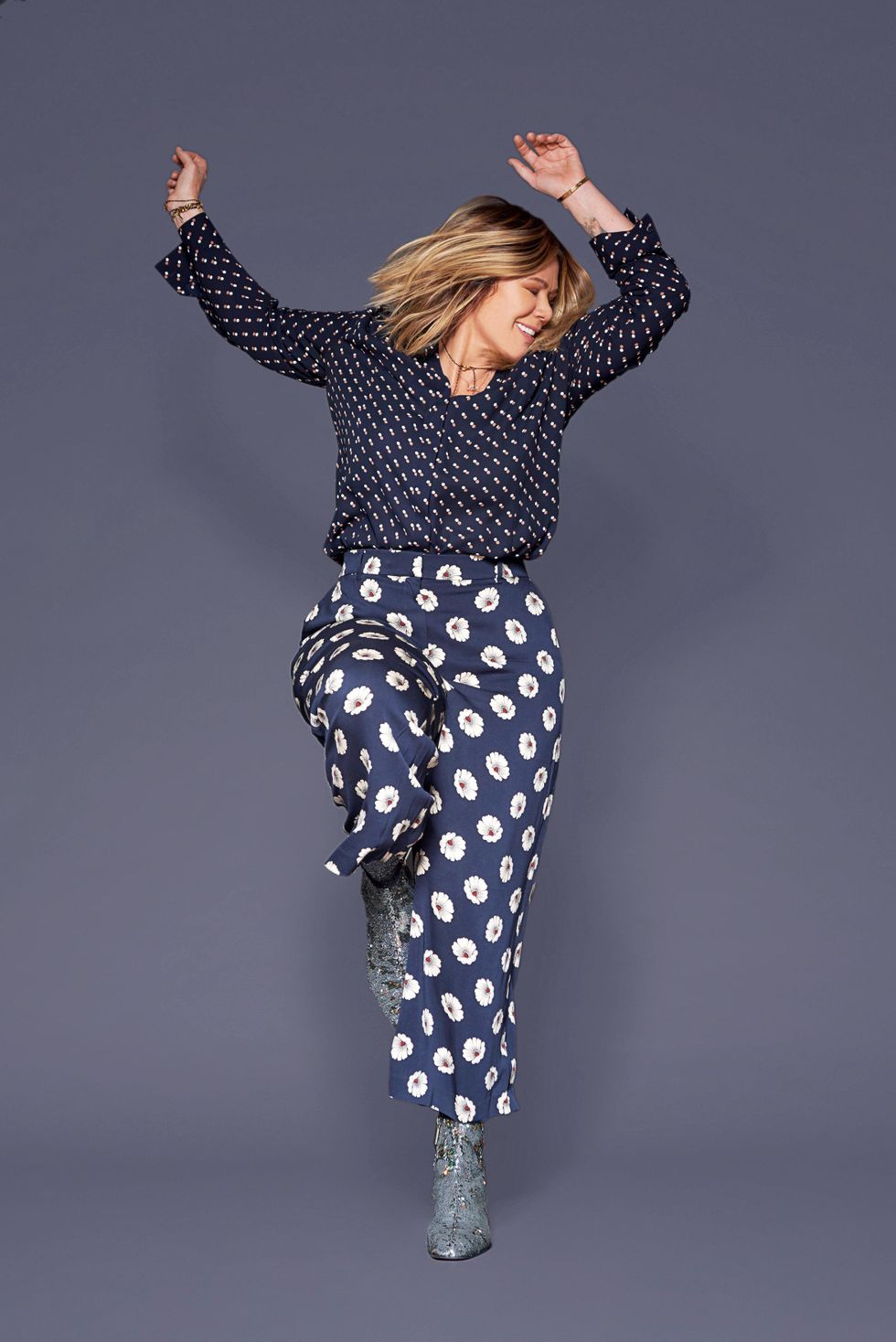
Courtesy Michaels
Today, Mia Michaels is basically a household name. But she was mostly working unnoticed until she was 32, when she founded her company, RAW, in New York City. At age 35, she was creating work for Madonna, and two years later, she earned an Emmy nomination for her work on “Celine in Las Vegas: Opening Night Live.” What has followed is a nearly two-decade boom that includes three Emmy Awards for her work on “So You Think You Can Dance”; choreographing Broadway’s Finding Neverland; directing/choreographing the 2016 New York Spectacular Starring the Radio City Rockettes; writing a memoir; and teaching dancers around the world. At 55, she is still embracing each new opportunity.
“The ebbs and flows of a long career are real and intense,” she admits. “Jobs come and go—I’ll experience long periods without work, followed by a stretch of being double-booked. So I set my life up as a master teacher. It brings in consistent money and keeps me in the studio. I’m always working on movement for class so I don’t get stale, stuck or afraid.” —Haley Hilton
Creating What Tap—and the U.S.—Is Calling For: Dormeshia
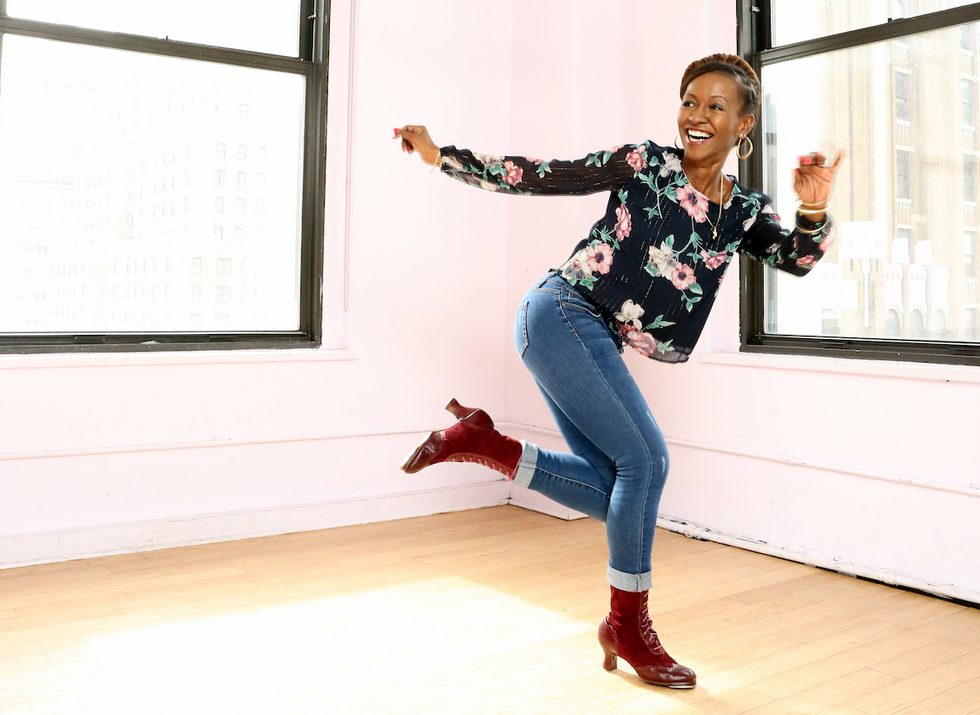
Jayme Thornton
When a New York Times headline in 2019 proclaimed Dormeshia the “Queen of Tap” and asked “Is Her Moment Now?”, the question seemed both rhetorical and prescient. Sure, she’d appeared in the star-studded Imagine Tap!, toured the international tap festival circuit and earned a 2014 Astaire Award for Outstanding Female Dancer in After Midnight—no doubt in recognition of the Fosse-like combination of highly technical dancing and unflappable grace for which she is known. But it’s her choreographic talent that’s garnered recent acclaim. In addition to co-creating The Blues Project with
Michelle Dorrance, Derick K. Grant and Toshi Reagon, in 2016 she debuted And Still You Must Swing, which enjoyed successful runs at Jacob’s Pillow and The Joyce Theater. A tribute to Black excellence and to tap’s cultural and musical roots, it was the show that the art form itself, and the country’s sociopolitical context, had been crying out for.
Her advice for those stuck in a rut? “When tap dancers aren’t working, they need to be shedding, listening to music, building their stamina and keeping their tools nice and sharp, so when the phone rings they’re ready to go,” says Dormeshia, 45. “Your actions in the ebb will determine the flow.” —Ryan P. Casey
The Chameleon: Sonya Tayeh
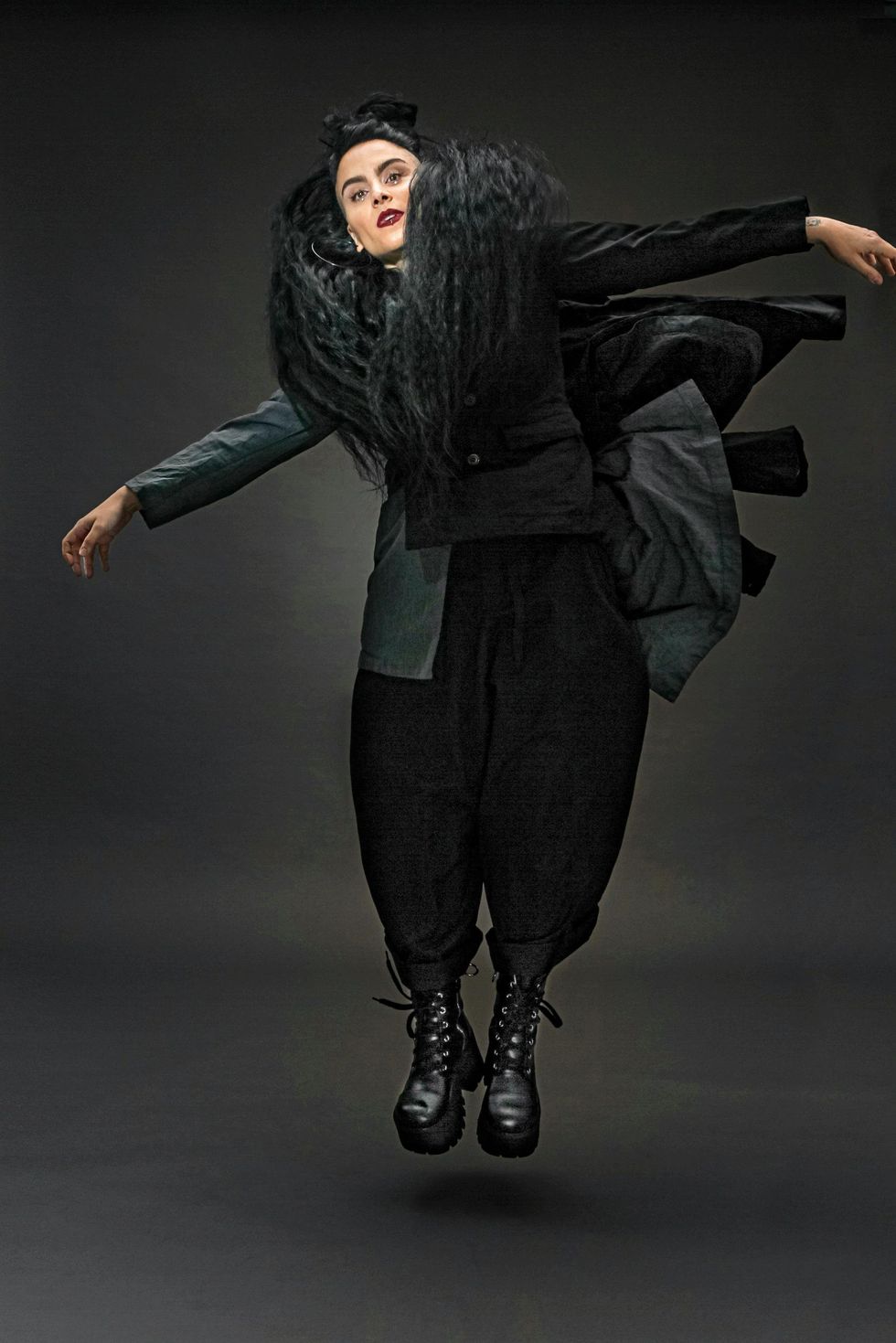
Jayme Thornton
Though she became a favorite choreographer on “So You Think You Can Dance,” Sonya Tayeh doesn’t think of the show as her breakthrough. Rather, it was a cross-country leap in her mid-30s, when she moved away from her West Coast commercial career for an unknown future in New York City, after getting hired to choreograph Signature Theatre’s Kung Fu, a play about Bruce Lee.
“To be an evolved artist involves taking big chances,” she says. In the years since, Tayeh’s kept opening doors with commissions from Jacob’s Pillow, Fall for Dance and the Martha Graham Dance Company. At 42, she earned her first Broadway credit with Moulin Rouge!, and in 2020, she snagged a Best Choreography Tony nomination for the show. Earlier this year, she choreographed a digital premiere for American Ballet Theatre.
Next up, her choreography for Sing Street is Broadway bound, and she’s working on a major motion picture. “I’ve never thought, I dream of this. I want to do this,” she says. “I have a dream of having a versatile, consistent career that holds true to my artistic integrity—whatever room I’m in.” —Madeline Schrock
Crafting Singular Projects: Gesel Mason
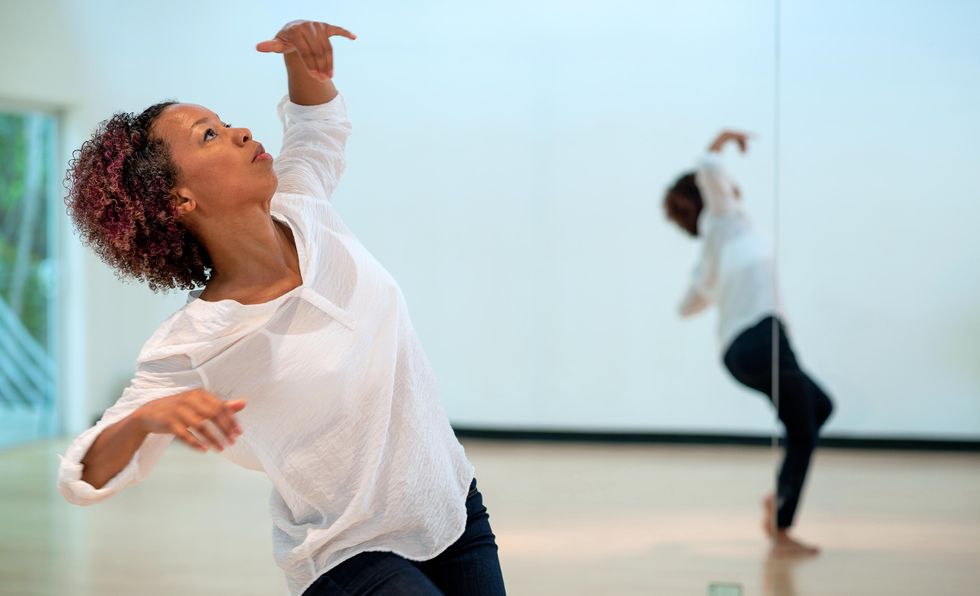
Joe Frantz, Courtesy Mason
Over the last two decades, Gesel Mason’s power as a kinetic storyteller has ramped up with a string of strikingly original projects, including her ongoing No Boundaries: Dancing the Visions of Contemporary Black Choreographers. In this one-of-a-kind performance and web-based archive of prominent African-American choreographers’ works, Mason uses dance to explore both resilience and the ongoing history of silencing, erasure and appropriation. Last year, she was awarded a National Endowment for the Humanities grant worth just under $100,000 to support the project.
Her most recent opus, Yes, And, poses the question, “Who would you be and what would you do (or make) if, as a Black woman, you had nothing to worry about?”
As an associate professor of dance at the University of Texas at Austin, Mason, 50, encourages her students to trust that their paths will be unique. “No one has the voice that you have,” she says. “Follow your heart, intuition and curiosity. Dancing is more than being onstage; it’s how you are in the world.” —Nancy Wozny
From Sports to Dance: Kris Lenzo
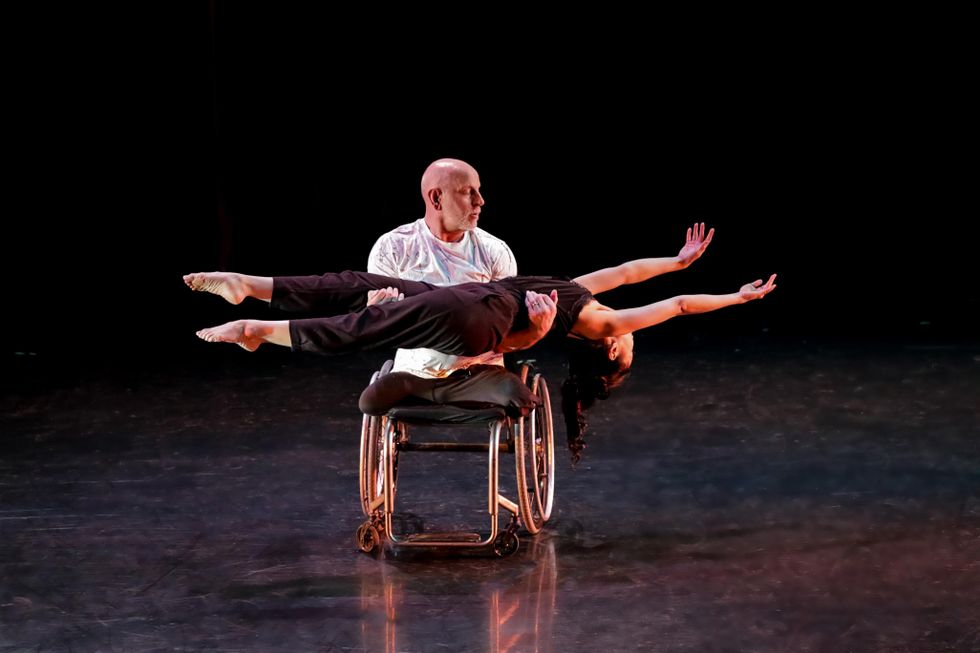
Kris Lenzo with Mei-Kuang Chen in Insomnia, Photo by Sarah Najera Tanya Schmidt, Courtesy Lenzo
Until 2003, Kris Lenzo says he only danced “once or twice a year at a party.” More an athlete, Lenzo swam and played basketball, football and softball growing up. He followed his brother into long-distance cycling, completing his first thousand-mile ride at age 16. After a work accident three years later, both of Lenzo’s legs were amputated. Within months of his recovery he was practicing with the Detroit Sparks, then a highly ranked wheelchair basketball team, and shortly after that he began wheelchair racing.
Around 2002, he asked for accessibility improvements at his daughter’s Oak Park, Illinois, preschool, also home to the Academy of Movement and Music and the dance company MOMENTA. To celebrate the completion of the building’s retrofit, Lenzo made his debut as part of a physically integrated cast that included disability dance advocate Ginger Lane. Since then, Lenzo has performed 34 works by 18 choreographers and participated in workshops with AXIS Dance Company. “I was 43 when I started performing. Most dancers are at the tail end at that point, if not finished,” says Lenzo, now 61. “I’m really grateful for it. Dance has brought me a lot of joy.” —Zachary Whittenburg
With the Diligence of a Dramaturg: Melanie George
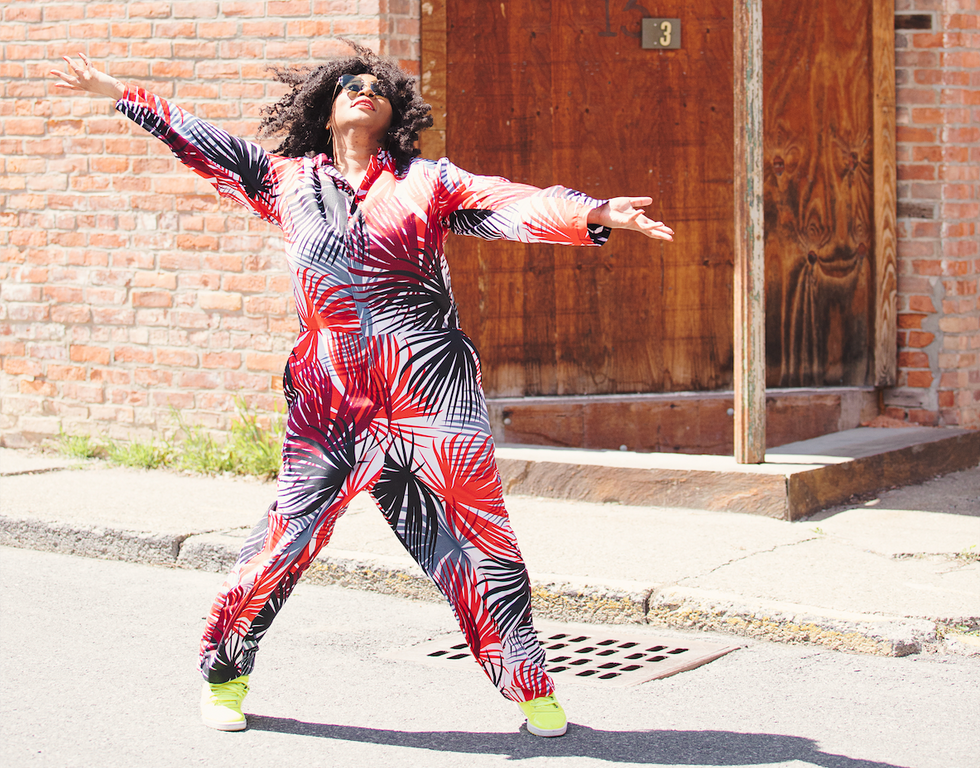
JD Urban, Courtesy George
On the surface, it may seem like Melanie George suddenly arrived in 2020. The founder of Jazz Is… Dance Project (dedicated to raising the visibility of jazz and its roots), she’s a new associate curator at Jacob’s Pillow, an in-demand teacher, a speaker and a facilitator for digital events at such venues as Jacob’s Pillow, SummerStage NYC, the Guggenheim and more.
But according to George, 48, her rise to national prominence was a result of “strategy, diligence, hustle and determination.” She attributes her current career momentum to a confluence of events, including her former job as the full-time dance dramaturg at Lumberyard in Catskill, New York, from 2016–20 and her (spectacular) contribution to the 2020 documentary Uprooted: The Journey of Jazz Dance.
“You will have a lot of careers in dance, so have multiple visions for your life,” she tells younger artists. “If you want it, do the work.” —Nancy Wozny
Intercontinental Storyteller: Cathy Marston
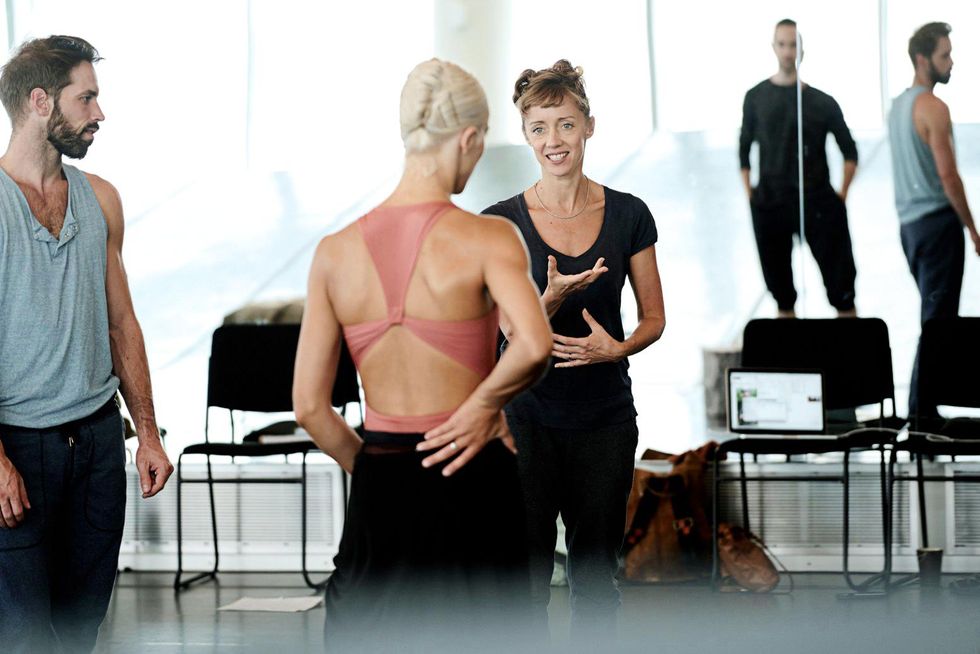
Cathy Marston at Les Grands Ballets Canadiens de Montréal. Photo by Sasha Onyshchenko, Courtesy Marston
Drawn to telling stories and bringing literature to life onstage, Cathy Marston gleans inspiration from everything from Greek mythology to Ibsen to Nabokov. She created her first piece, for The Royal Ballet’s UK tour, while still dancing and barely in her 20s, and has worked continuously across Europe since, including stints as associate artist at The Royal Opera House and director of Bern Ballett.
In 2018, Marston entered a new chapter of her career, making a name for herself in the U.S. A San Francisco Ballet commission was followed by the American debut of her full-length Jane Eyre by American Ballet Theatre. Marston’s newest ballets, Mrs. Robinson for SFB and Of Mice and Men for The Joffrey Ballet, will premiere next year. Now, she will become the next director of Ballet Zurich, starting summer 2023.
“Don’t feel that you need to have achieved x, y and z by the time you’re 25,” says Marston, now in her mid-40s. “I’m so glad that didn’t happen to me. You need to allow yourself time to explore and slowly digest the things that you discover, and distill your own voice.” —Chava Pearl Lansky
Still a Muse: Jodi Melnick
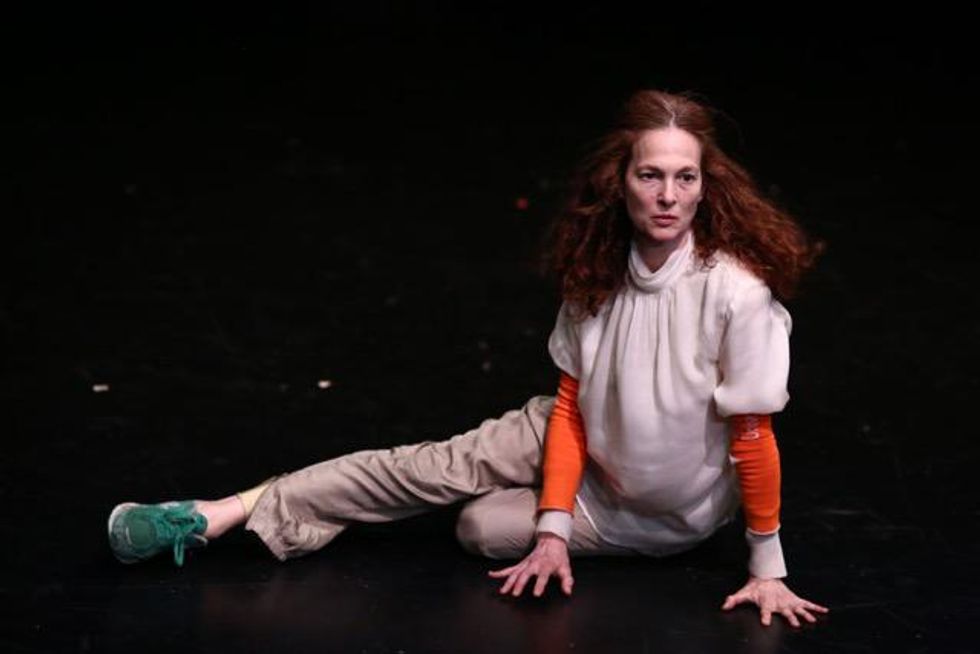
Paula Court, Courtesy Melnick
From the minute she graduated SUNY Purchase, Jodi Melnick got a string of gigs with postmodern choreographers. Her stylish, nuanced dancing turned heads. She enjoyed being a catalyst to help choreographers realize their vision. Melnick remembers a moment when, working quietly one-on-one with the legendary Sara Rudner, “I understood something physically, philosophically, mentally, cerebrally, enzymically, molecularly that became mine in my body that allowed me to step into her essence—like capturing what light is,” she says. She’s also served as muse for Trisha Brown, Vicky Shick, Twyla Tharp and Susan Rethorst.
Melnick didn’t choreograph in earnest until 20 years ago, when she was 37. Now she is sought after by some of New York City’s starriest dancers. Sara Mearns, Taylor Stanley and Lloyd Knight, among others, want to soak up her mind–body process, and she’s been working collaboratively with Rashaun Mitchell and Silas Riener. Melnick, who teaches at Barnard College and Sarah Lawrence College, has not left her muse identity behind. “I’m proud to be called a dancer,” she says. —Wendy Perron
Multidisciplinary Late Starter: Onye Ozuzu
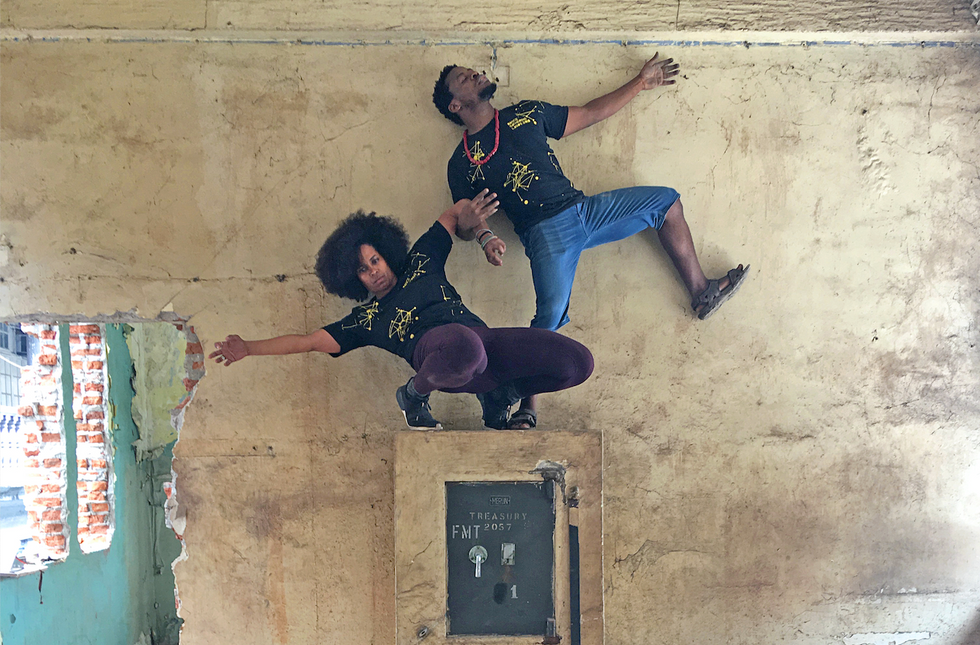
Onye Ozuzu and Qudus Onikeku improvise as part of danceGATHERING in Lagos. Photo by Jovan Landry, Courtesy Ozuzu
Growing up, Onye Ozuzu would dance in the living room with her father, a behavioral psychologist and Nigerian civil war survivor who loved music. She also remembers hearing him say, ” ‘You have a chance to get an education that can guarantee income. Don’t throw that away on dance lessons,’ ” she says. “My dad did give us tennis lessons. ‘If you’re that much of a talent at something physical, you’ll be able to win Wimbledon.’ “
Free to choose her own classes at Florida State University, Ozuzu caught up in dance quickly thanks to Darrell Jones and Trebien Pollard, her castmates in works by Nia Love, then a graduate student. “I didn’t decide I was going to be a dancer until I was 20,” she says. “I was majoring in English literature and economics and setting myself up to become a lawyer.” Ozuzu, now 50, has been active in academia ever since, in leadership at Columbia College Chicago and the University of Colorado Boulder prior to her current role as dean at the University of Florida College of the Arts. All the while, she’s advanced her multidisciplinary creative career, convening collaborators from practices as diverse as urban farming and woodworking.
“I don’t think of myself as a ‘late bloomer’ so much as I was a late starter, so I focused on influences like Les Ballets Africains, where it’s very clearly women in their 40s dancing the lead roles,” says Ozuzu. “Those images helped reorient me.” —Zachary Whittenburg
Raising Latina, Chicana and Indigenous Voices: Vanessa Sanchez
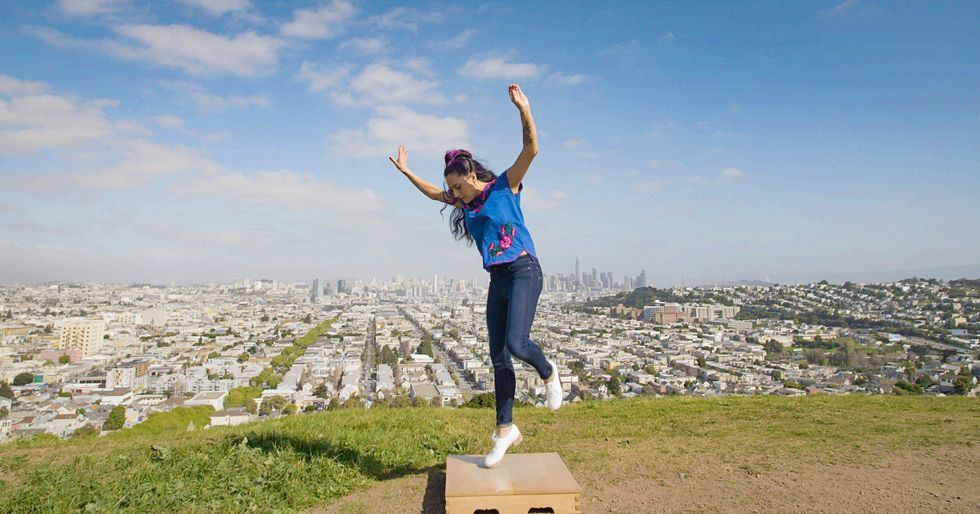
Kelly Whalen, Courtesy KQED Arts
Shortly before turning 30, Vanessa Sanchez founded her San Francisco–based ensemble, La Mezcla, as a platform for the voices of Latina, Chicana and Indigenous women and youth. In 2019, the Chicana-Native percussive artist—whose main forms include tap, traditional Mexican Zapateado Jarocho, and Afro-Caribbean traditions from Brazil and Cuba—won both a Dance/USA Artist fellowship and an Isadora Duncan Award.
But her national profile skyrocketed the following year when the Bay Area public media outlet KQED highlighted the company in its “If Cities Could Dance” series, with excerpts of Pachuquísmo, Sanchez’s signature work chronicling women of the 1940’s Zoot Suit era. Since then, the gigs keep coming, including livestreams from The Joyce Theater and Lincoln Center’s virtual #ConcertsForKids. Most recently, a 2020 Hewlett 50 Arts Commission grant helped fund her new work, Ghostly Labor, which explores the exploitation of female labor in the U.S.-Mexico borderlands.
Her advice? “Learn, research and train with the long game in mind,” says Sanchez, 36. “Never let society tell you how to express yourself. Never stop being a student.” —Nancy Wozny
Never Not Expanding: Camille A. Brown
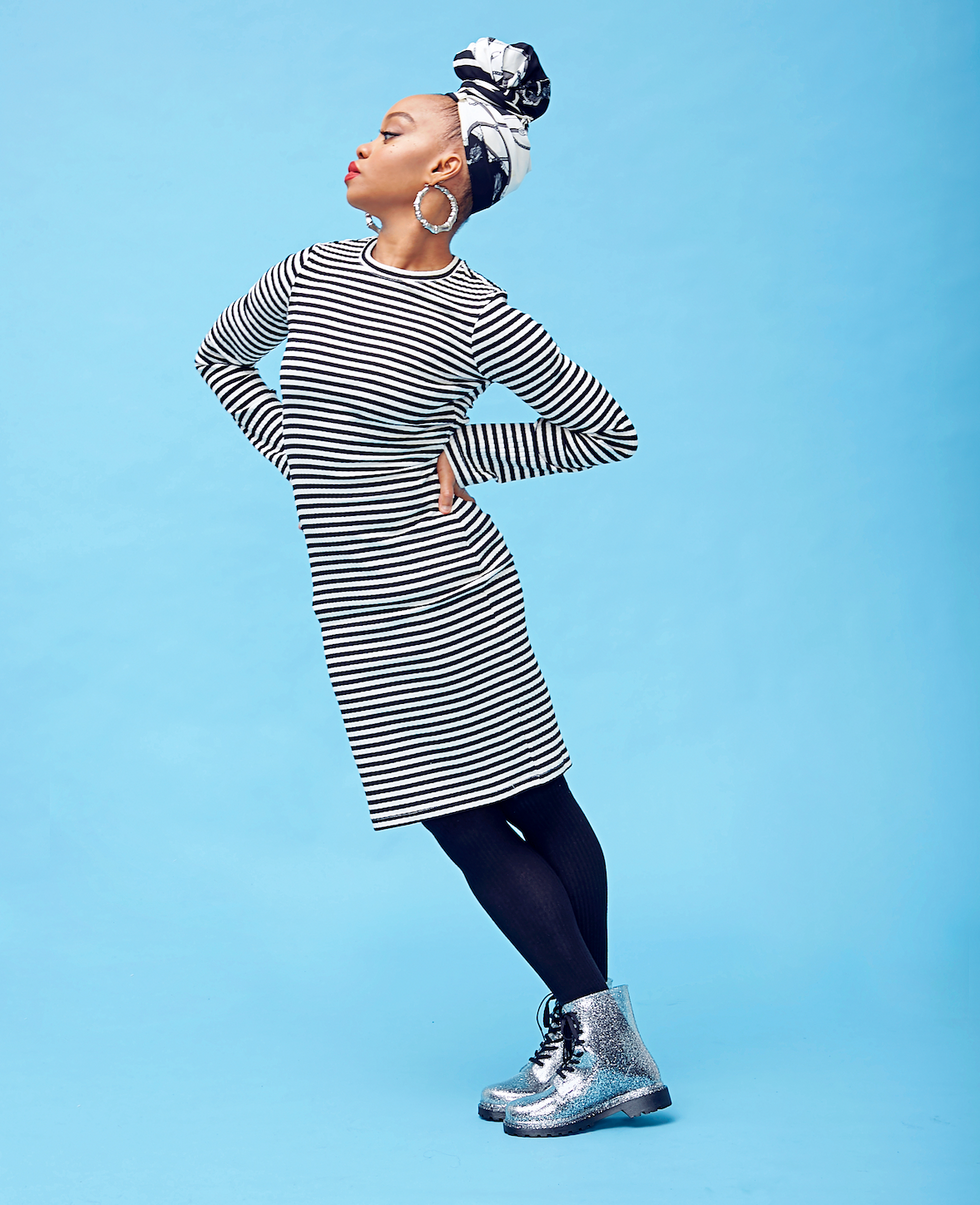
Whitney Browne, Courtesy LSG Public Relations
Camille A. Brown’s career is like its own universe, steadily expanding. A year after joining Ronald K. Brown’s Evidence, she began choreographing for an ever-growing list of companies and, in 2006, she started her own. Ten years ago, she branched out into theater and opera. Mainstream recognition came with her choreography for Broadway’s Once On This Island, and recently she’s also picked up film credits.
It may seem like a swift progression, but “to me,” says Brown, “it was a 20-year climb.” Now 41, she’s about to become the Metropolitan Opera’s first Black director to create a main-stage production, Fire Shut Up in My Bones, and is slated to be the first Black woman to direct and choreograph on Broadway, with the revival of For Colored Girls Who Have Considered Suicide/When the Rainbow Is Enuf.
“People don’t see defeat; they just see the successes,” she says. “The same day that Once On This Island was announced, I got a call from another theater saying they weren’t going to move forward with me on a show because I didn’t have enough musical experience. In the ‘nos,’ I go through my hurt, but then I have to look ahead and see ‘Well, what opportunity does this provide?’ Because you’re released to do something else.” —Madeline Schrock
Creating With a Reason: Kenny Ortega
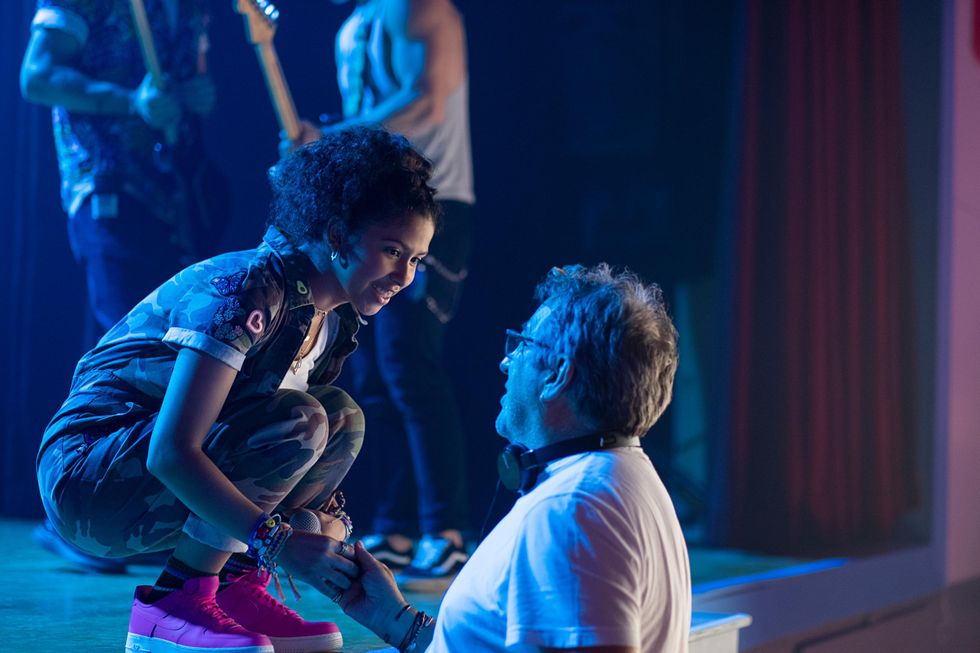
Kenny Ortega (right) on set. Photo by Kailey Schwerman, Courtesy Netflix
Kenny Ortega attributes much of his career to a night in his mid-20s spent on the dance floor of a club in San Francisco, where he was discovered by the art-punk band The Tubes. The group invited him to choreograph their shows for the next 10 years, and his work caught the eye of artists like Madonna, Cher, Bette Midler and The Pointer Sisters. In his mid-30s, Ortega capitalized on these connections with seemingly endless national and world tours. He booked the 1980 roller-skating movie Xanadu, where Gene Kelly mentored him in creating movement for the screen. That’s where he found his sweet spot, choreographing some of the most iconic dance movie scenes of all time: the “Twist and Shout” sequence from Ferris Bueller’s Day Off; “Try a Little Tenderness,” from Pretty in Pink; and “The Time of My Life,” from Dirty Dancing. He’s choreographed for Michael Jackson, the Super Bowl, the Olympics and the Academy Awards. He directed a 2006 Disney TV movie which would eventually become the mammoth High School Musical franchise. In 2019, at 69 years old, he received a star on the Hollywood Walk of Fame.
“The first night I had dinner with Gene Kelly, he asked me, ‘What is your raison d’être?’—my reason for being,” Ortega remembers. “I had to think about it really hard and long. From then on, I made sure there was something significant about opportunities that made them worth getting up every day and putting my all in. With that came the success.” —Haley Hilton
